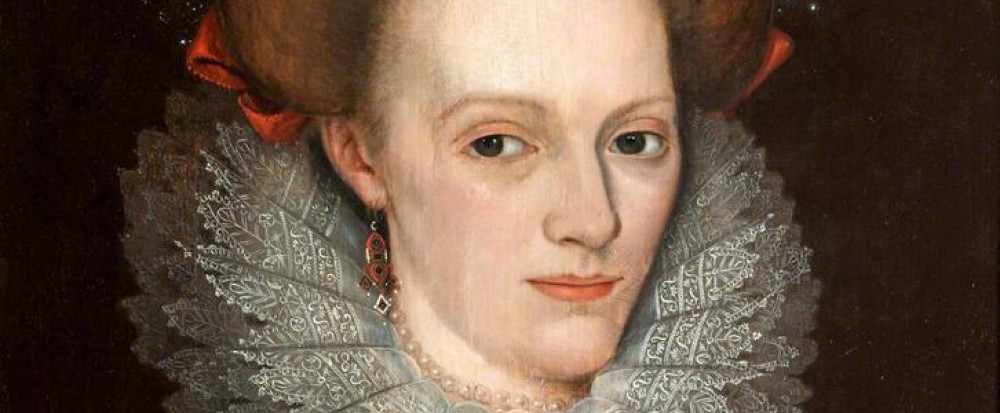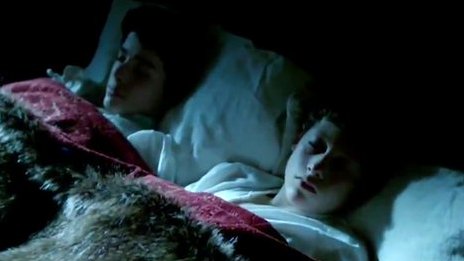Well, it’s all over – the hype, the excitement, the criticisms – as last Sunday evening saw the conclusion of The White Queen.
I’m still not quite sure what I thought about it all. I feared for everyone’s eyesight as they all stared into the eclipse of the sun, a portent of Henry’s imminent success, or was it Richard’s impending doom, but it all turned out alright in the end. And while Princess Pushy Pants and Lady Margaret tested the ground for their future rocky relationship, series producers whetted the viewers’ appetite for another round of royal doings!
By and large, I enjoyed it; although I’m none the wiser as to the fate of those young boys in the tower. So the writers and producers took a few liberties, but it was historical fiction when all is said and done.
So now we come to the last Neville sister, Margaret and I’m wondering what happened to her husband John de Vere in The White Queen production. Did I blink and miss any reference to him, or did he get lost in the Barnet melee, which saw the demise of Warwick?
Margaret Neville was born in 1442 and unlike her sisters would apparently avoid the perilous marriage stakes until she was in her mid 20s. Her husband was loyal Lancastrian John de Vere, 13th Earl of Oxford, who had already done time in the tower for his part in a red rose conspiracy. By the summer of 1469 he had been pardoned by Edward IV and upon his release from the tower, took off with his brother in law Warwick to stir up Robin of Redesdale’s northern rebellion.
Although it didn’t go quite according to plan and Oxford and Warwick had to escape to France, they were soon back. By October 1470 Henry VI was restored to the throne with Oxford taking a leading role in the ceremony at St. Paul’s. In 1471 Oxford and his men prevented Edward from landing off the Norfolk coast and in April of the same year Oxford commanded the right wing of the Lancastrian army at Barnet.
However, with a victorious Edward back in charge, Oxford takes refuge in Scotland and it is now we have the first real evidence of what life must have been like for Margaret.
He writes to ask her:-
‘Also ye shall send me in all haste all the ready money ye can make; and as many of my men as can come well horsed, and that they come in divers parcels.’
Presumably Margaret was still living at the family seat of Castle Hedingham in Essex with her only child George, but financial security would soon be a thing of the past. By April 1472 Margaret was living in St Martin’s sanctuary. Her status as the wife of a traitor rendered her vulnerable.
Meanwhile fearless de Vere continued his fight for the Lancastrian cause. He masterminded attacks on Calais, funded by a spot of piracy, and captured St Michael’s Mount in Cornwall. Following his eventual surrender in 1474 he spent the next ten years a prisoner at Hammes Castle.
For more than fourteen years Margaret lived a life of penury. It was said she relied upon the charity of others and what ‘she could earn by her needle.’ King Edward pardoned her but it was not until 1481 that he granted her £100 a year ‘on account of her poverty.’
In 1484 John was removed from the prison in Calais but while he was being transferred to England he managed to escape his gaolers. He quickly joined Henry Tudor and played a significant role in the contender’s victory.
Margaret and her husband were reinstated at Castle Hedingham but sadly their son had died sometime during his father’s imprisonment.
Margaret died in 1506. She was well into her 60s, a respectable age for a woman who had experienced the vicissitudes of the long years of war.

Castle Hedingham courtesy of www.balloonride.org.uk
She was buried before the altar of the Lady Chapel of Colne Priory in Essex where her husband John joined her seven years later. Originally alabaster effigies of the couple lie side by said, she with her feet on a winged boar, he with his on a stag. These effigies were destroyed in the mid 18th century, but a drawing made in 1653 survives, the only known representation of Margaret.
The Kingmaker’s Sisters: Six Powerful Women in the War of the Roses by David Baldwin











